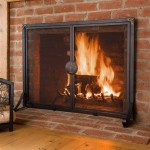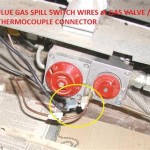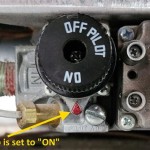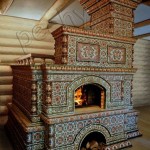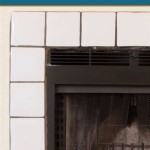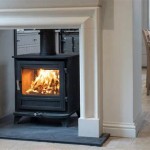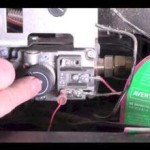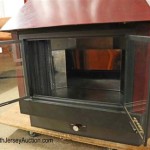Gas Fireplace Igniter Replacement: A Comprehensive Guide
A gas fireplace offers convenience and warmth, providing ambiance with the simple flick of a switch. However, when the igniter fails, this convenience is compromised. The igniter is a crucial component responsible for initiating the flame in a gas fireplace. Understanding the reasons for igniter failure and the process of replacement is essential for maintaining the functionality and safety of the appliance.
Several factors can contribute to a malfunctioning gas fireplace igniter. These frequently include wear and tear from repeated use, the accumulation of dust and debris, and electrical component failure. Diagnosing the specific cause is the first step in determining the appropriate course of action. Replacing the igniter, while often a straightforward process, requires careful attention to detail and adherence to safety guidelines.
Identifying a Faulty Igniter
The most obvious symptom of a faulty igniter is the inability to light the gas fireplace. The expected “click-click-click” sound that typically accompanies ignition may be absent, or the fireplace may attempt to ignite without success. However, before concluding that the igniter is the problem, it's important to rule out other potential causes, such as a depleted propane tank, a blocked gas line, or a malfunctioning thermocouple. A thorough inspection is necessary before proceeding with replacement.
Observe the igniter closely while attempting to light the fireplace. If a spark is visible and audible, the igniter is likely functioning correctly, and the problem may lie elsewhere within the system. Conversely, if there is no spark, or the spark is weak and inconsistent, the igniter is likely the culprit. Furthermore, use a multimeter to check the igniter's continuity. A lack of continuity indicates a break in the circuit, confirming the need for replacement.
Another diagnostic step involves cleaning the igniter. Dust and debris can accumulate on the igniter, preventing it from generating a sufficient spark. Using a soft brush or compressed air, carefully remove any visible buildup. After cleaning, attempt to ignite the fireplace. If the problem persists, replacement is generally the recommended solution.
Preparing for Igniter Replacement
Safety is paramount when working with gas appliances. Before beginning the replacement process, always turn off the gas supply to the fireplace. This usually involves locating the gas shut-off valve, typically found near the fireplace or at the gas meter, and turning it to the "off" position. Confirm the gas is off by attempting to light the fireplace (with the gas valve supposedly off); no gas should flow.
Gather the necessary tools and materials. These typically include a new igniter compatible with the specific gas fireplace model, a screwdriver set (including Phillips head and flathead screwdrivers), pliers, a wire stripper, wire connectors, and a multimeter. Consult the fireplace's user manual to identify the correct igniter model number. Using an incompatible igniter can lead to performance issues or potentially hazardous situations.
Taking photographs of the existing igniter and its connections before disconnecting anything is highly recommended. These photos will serve as valuable references during the reassembly process, ensuring that the new igniter is connected correctly. Pay close attention to the wiring configuration and the positioning of the igniter within the fireplace.
Step-by-Step Igniter Replacement Procedure
Carefully disconnect the wires connected to the existing igniter. Use pliers to gently remove any wire connectors or clips. Make sure to label the wires or take detailed notes on their positions to ensure proper reconnection later. Avoid pulling directly on the wires, as this can damage the connectors or the wiring itself. Instead, use a gentle twisting motion while pulling the connector free.
Remove the old igniter from its mounting bracket or retaining clips. Depending on the fireplace model, the igniter may be held in place by screws, clips, or friction. Use the appropriate screwdriver or pliers to loosen or release the igniter. Handle the old igniter with care to avoid damaging any surrounding components.
Install the new igniter into the mounting bracket or retaining clips, ensuring that it is securely in place. Align the igniter in the same position as the old one, referring to the photographs taken earlier. Tighten any screws or clips to secure the igniter, but avoid over-tightening, which could damage the igniter or the mounting bracket.
Reconnect the wires to the new igniter, matching the wiring configuration of the old igniter. Use wire connectors to securely join the wires, ensuring that they are tightly crimped and insulated. Refer to the notes or photographs taken earlier to ensure that each wire is connected to the correct terminal. A secure and correct connection is vital for the igniter to function properly.
Turn the gas supply back on to the fireplace. Carefully check for any gas leaks around the connections using a gas leak detector solution (soap and water). If bubbles appear, immediately turn off the gas supply and tighten the connections. Once the connections are confirmed to be leak-free, attempt to ignite the fireplace to test the new igniter.
Observe the flame closely. A healthy flame should be blue with a yellow tip, indicating proper combustion. If the flame is yellow, orange, or smoky, it may indicate a problem with the gas supply or air mixture. Consult the fireplace's user manual or a qualified technician to address any flame abnormalities.
Dispose of the old igniter properly, following local regulations for electronic waste disposal. Many electronic components contain materials that are harmful to the environment, so proper disposal is essential.
While this guide provides a detailed overview of gas fireplace igniter replacement, it is crucial to recognize that working with gas appliances involves inherent risks. If there is any doubt or uncertainty regarding the procedure, consulting a qualified gas appliance technician is strongly recommended. A professional technician possesses the expertise and equipment necessary to diagnose and resolve gas fireplace issues safely and effectively, ensuring the continued safe operation of the appliance.

Gas Fireplace Won T Stay Lit Magic Touch Mechanical

Identifying Gas Fireplace Parts Www Mygasfireplacerepair Com

Gas Fireplace Pilot Lights Your Complete Guide Universe

Gas Fireplace Won T Stay Lit Magic Touch Mechanical

Gas Fireplace Parts Pilot And Igniter Assembly Burner China Water Heater Made In Com

Gas Fireplace Repair Won T Work Start Or Light Piezo Ignitor Spark Igniter

Gas Fireplace Parts Pilot And Igniter Assembly Burner China Water Heater Made In Com

Propane Natural Gas Fireplace Pilot Assembly Include Tube Thermocouple And Ignitor Wire Us Fruugo Bh

2pack Universal Piezo Spark Igniter Push On Gas Fireplace Grill Bbq Stove Com

Why Your Gas Fireplace Won T Light And Potential Solutions
Related Posts

